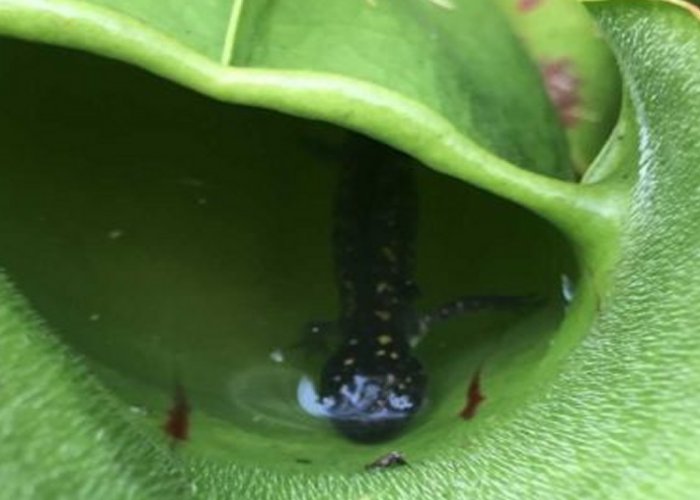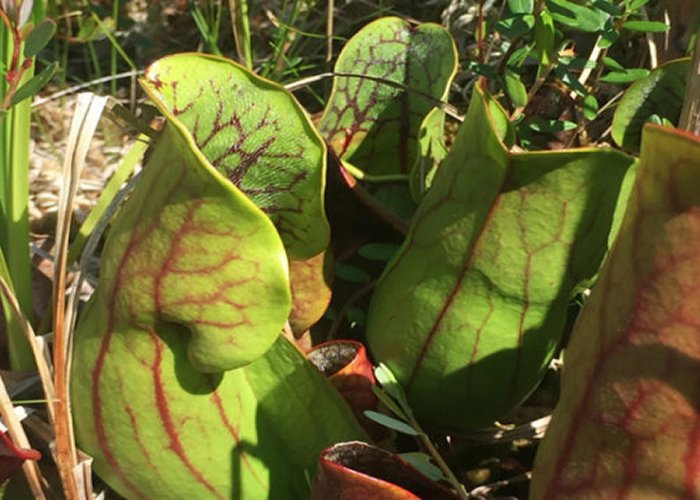Eddie Gonzales Jr. – MessageToEagle.com – A first for North America meat-eating pitcher plants have been discovered in Ontario’s Algonquin Park wetlands by biologists at the University of Guelph.
Researchers call the area – “Little Bog of Horrors” and the plants, they found there eat not only bugs but also young salamanders.

Pitcher plants growing in wetlands across Canada have long been known to eat creatures – mostly insects and spiders — that fall into their bell-shaped leaves and decompose in rainwater collected there.
But until now, no one had reported this salamander species caught by a pitcher plant in North America, including Canada’s oldest provincial park, a popular destination where the plants have been observed for hundreds of years.
“Algonquin Park is so important to so many people in Canada. Yet within the Highway 60 corridor, we’ve just had a first,” biologist Alex Smith said in a press release.
In summer 2017, then undergraduate student Teskey Baldwin found a salamander trapped inside a pitcher plant during a U of G field ecology course in the provincial park. Monitoring pitcher plants around a single pond in the park in fall 2018, the team found almost one in five contained the juvenile amphibians, each about as long as a human finger.
Several plants contained more than one captured salamander.
Those observations coincided with “pulses” of young salamanders crawling onto land after changing from their larval state in the pond. Smith said these bog ponds lack fish, making salamanders a key predator and prey species in food webs. Some of the animals may have fallen into the plants, perhaps attracted by insect prey. Others may have entered the plants to escape predators. Some trapped salamanders died within three days, while others lived for up to 19 days.

Prey caught inside the plant’s specialized leaves is broken down by plant digestive enzymes and other organisms in the water held inside the leaf. Smith said other factors may kill salamanders in pitcher plants, including heat, starvation or infection by pathogens.
He said pitcher plants may have become carnivorous to gain nutrients, especially nitrogen, that are lacking in nutrient-poor bog soil.
Other flesh-eating plants grow in nutrient-poor environments around the world. They include sundews, which use their sticky leaves to catch insects, and the Venus flytrap, whose carnivory partly inspired the Seymour plant in the sci-fi musical Little Shop of Horrors.
Meat-eating pitcher plants have been known since the eighteenth century. One species discovered a decade ago in Asia consumes mostly insects and spiders but also captures small birds and mice.
Smith said the Algonquin Park discovery opens new questions for biologists. Are salamanders an important prey source for pitcher plants? Are the plants important “predators” of the amphibians? Might the salamanders compete with plants for insect prey — and even “choke” the plant?
Written by Eddie Gonzales Jr. – MessageToEagle.com Staff Writer






